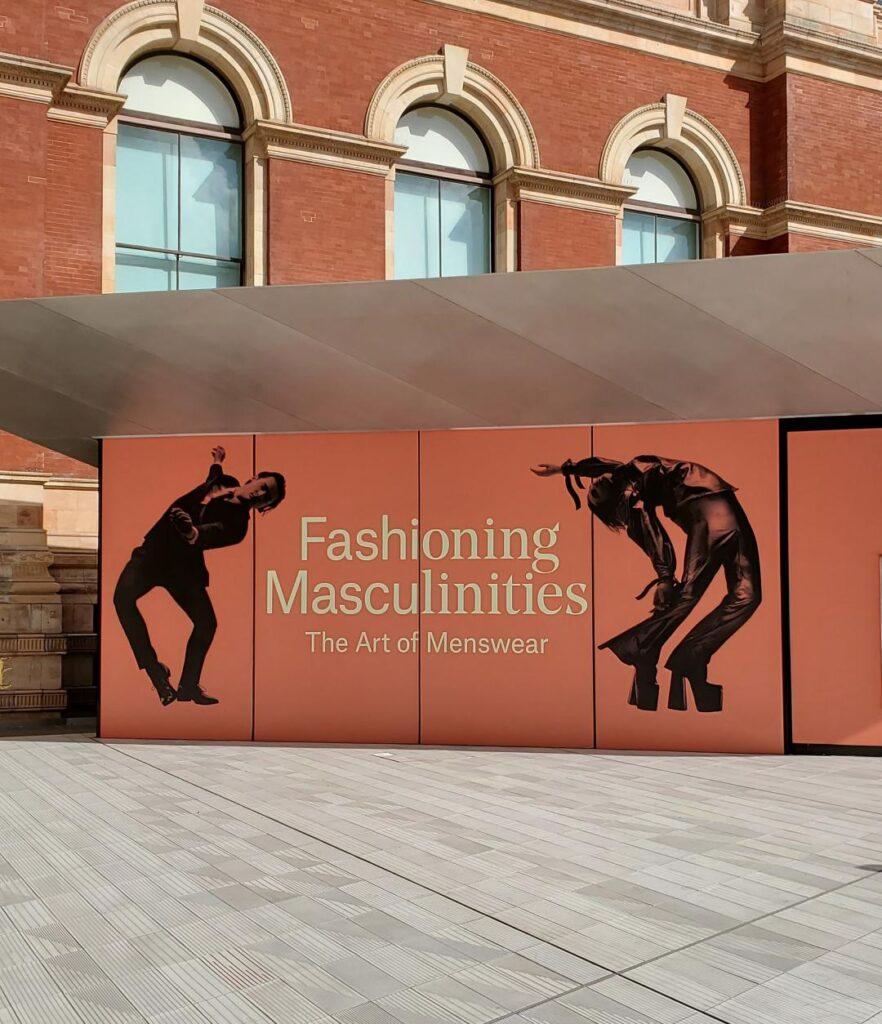
Victoria and I visited Fashioning Masculinities: The Art of Menswear exhibition at the V&A last year. Below, I’ve selected three of the most memorable portraits to share with you. In each, the sitters’ clothing and pose were chosen to impart a very definite statement and served to define how they would be perceived by the viewer.
 Once owned by Horace Walpole, the wooden cravat above was carved to imitate gros point de Venise, a heavily textured lace fashionable for both men and women during the middle of the 17th century.
Once owned by Horace Walpole, the wooden cravat above was carved to imitate gros point de Venise, a heavily textured lace fashionable for both men and women during the middle of the 17th century.

Charles Coote, 1st Earl of Bellamont, in Robes of the Order of the Bath by Sir Joshua Reynolds. While this portrait is today derided as an example of camp excess, at the time it was painted, the plumed headdress, tassels and beribboned shoes were meant to imply patriarchal power. Originally, the Earl’s robes were a rich scarlet red, the pigment now having faded to a feminine pink. Reynolds considered fashion to be fleeting, so rarely painted dress in such detail as above.
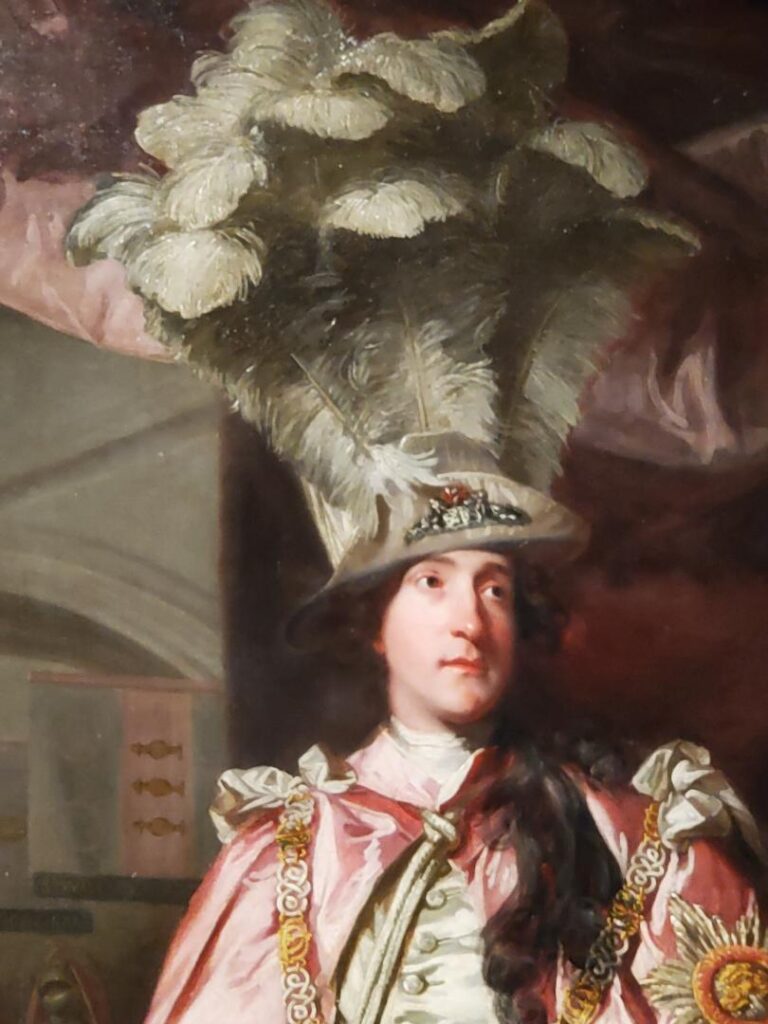
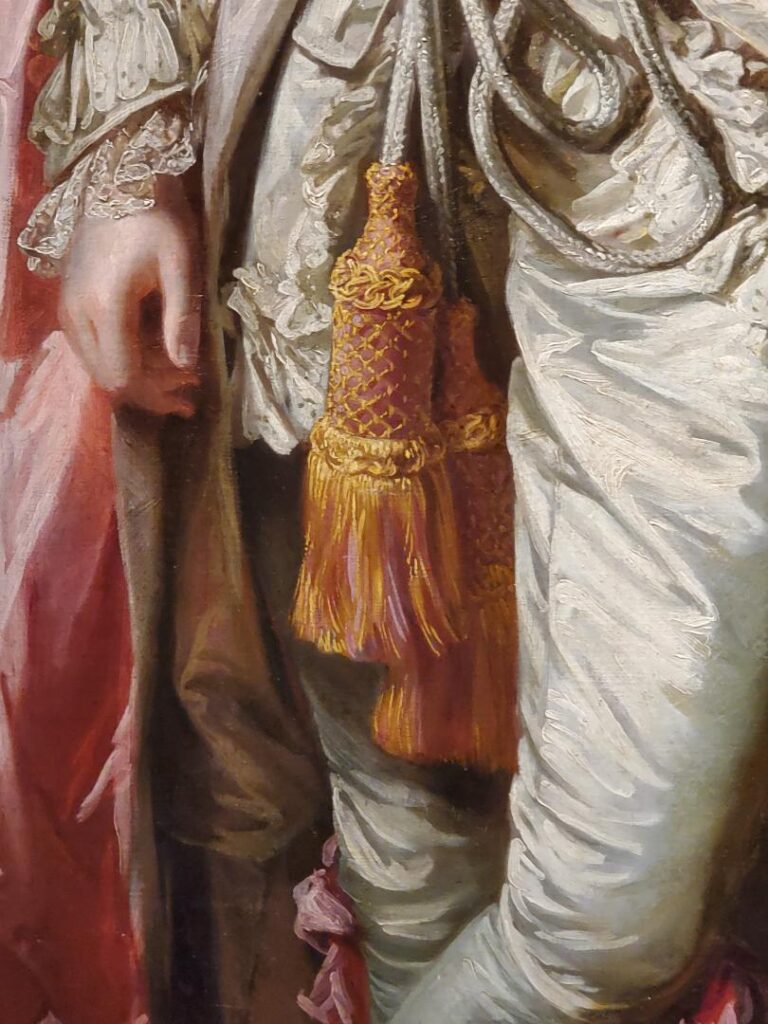

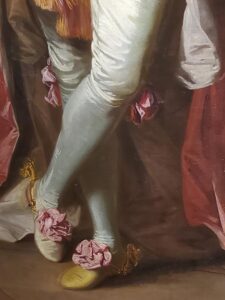
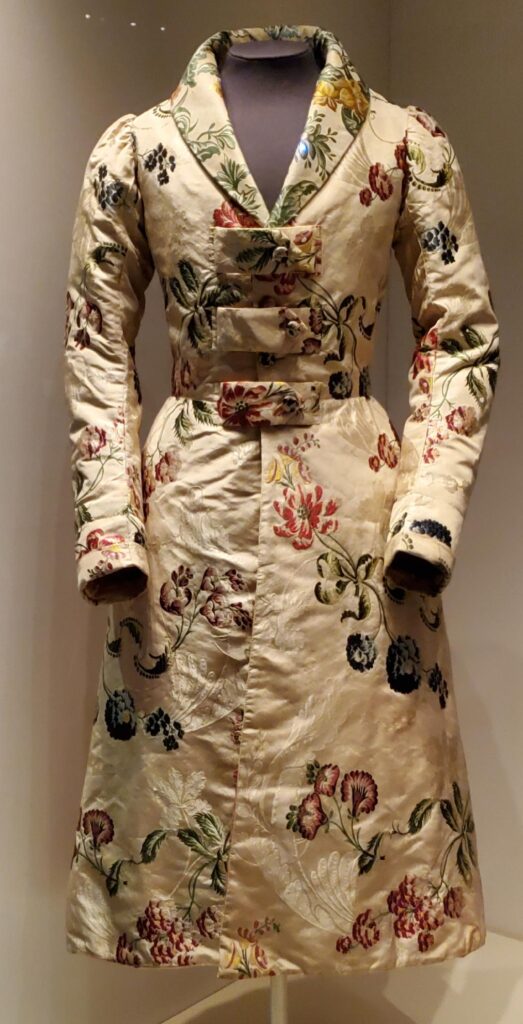
This elaborate robe de chambre of brocaded silk was made from a woman’s skirt.
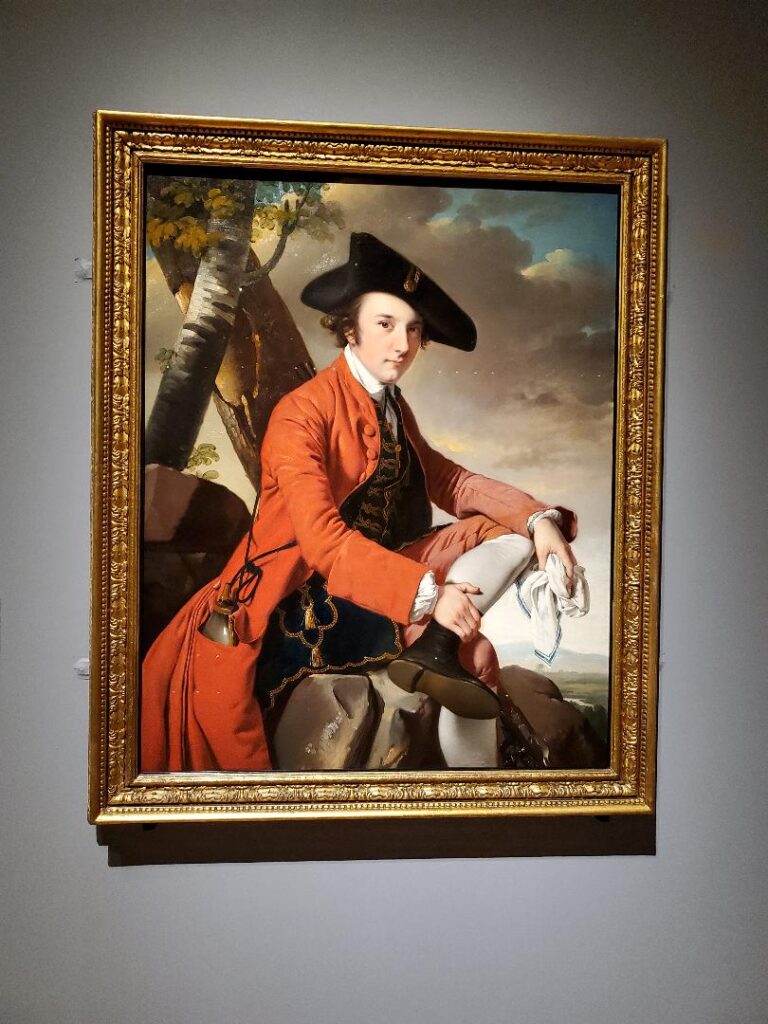
Fleetwood Hesketh by Joseph Wright of Derby 1769. Here, Hesketh is dressed as a country squire in hunting pink. The powder horn visible in his pocket and his relaxed pose signal that he is a man of leisure, with time to devote to his chosen pursuits. The skirted coat, perfect when riding, evolved into the frock coat.



Captain Gilbert Heathcote by William Owen, circa 1801-1805. Heathcote, a Navy captain, adhered to official guidelines in the tailoring of his uniform, embellishing it with gold braid, buttons and epaulettes to signal to the observer that he was both wealthy and fashionable.
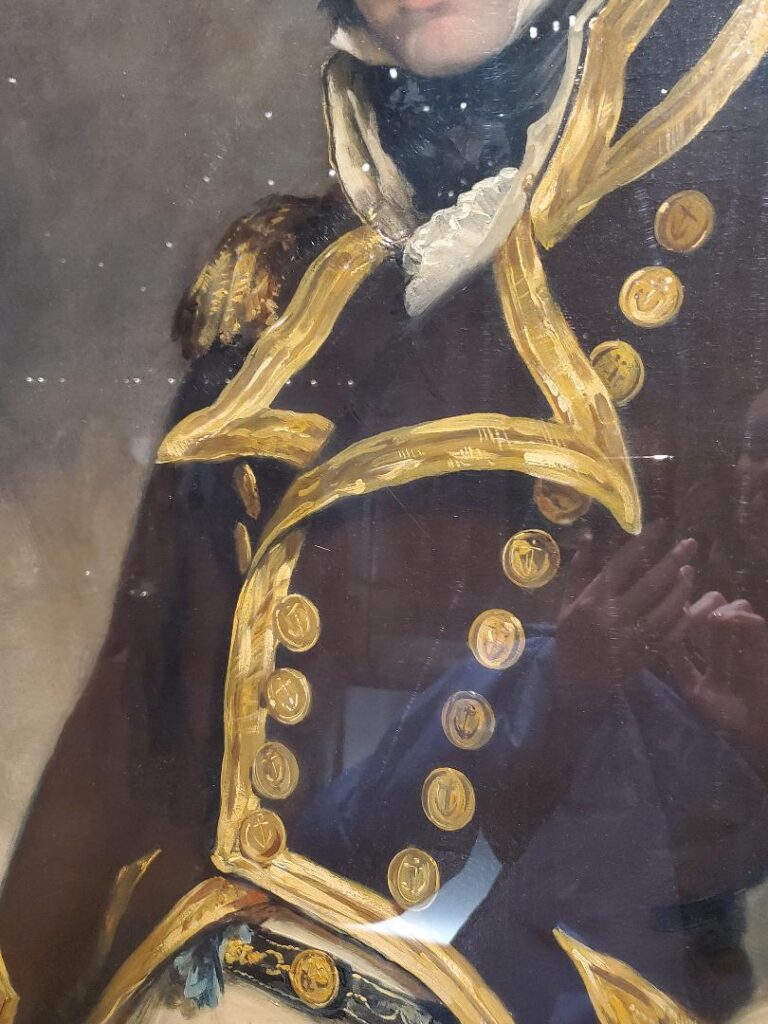
Do you have a favourite amongst the masculine portraits of the period? Please leave a comment and share your thoughts with us.